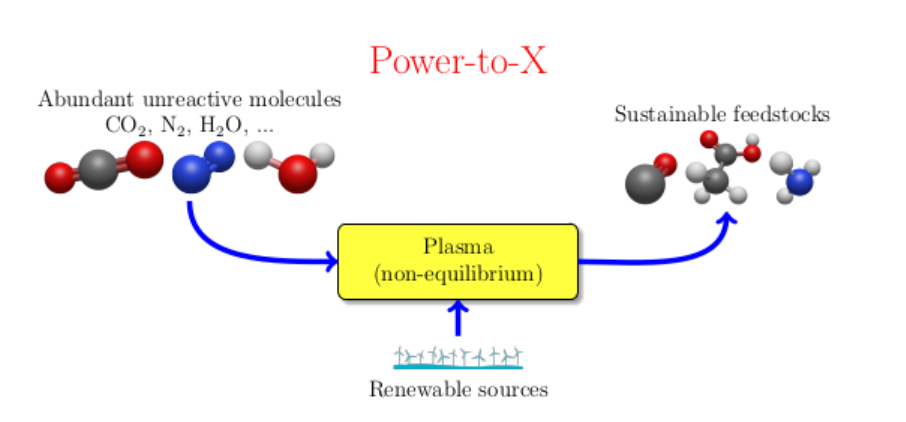By 2050, Europe aims to give up fossil resources, responsible for carbon oxide emissions that contribute to global warming. This transition to a climate-neutral society must be achieved through long-term strategies based on converting renewable electricity into synthetized feedstocks starting from abundant molecules like CO2, H2 and N2.
The goal of this project is to develop a technology that exploits the non-equilibrium of plasma discharges to overcome thermodynamic barriers to the chemical conversion of stable molecules. Specifically, the focus will be on CO2 reforming, as this would simultaneously tackle the greenhouse gas emissions and energy storage, and on the synthesis of NH3,which is a carbon-free energy vector crucial to produce fertilizers.
This study proposes an interdisciplinary approach between two research units of the University of Trento and CNR-ISTP of Bari, aiming to expand the knowledge of the fundamental processes in the plasma conversion.
UniTrento will focus on the experimental activity aiming to optimize the CO2 splitting and the N2 fixation performance. Gas chromatography, mass spectrometry and back current shunts will be employed to characterize the two main macroscopic parameters: the power dissipated into the discharge and the average gas composition entering/exiting the plasma reactor.
On the other hand, a microscopic characterization is necessary to investigate the dissociation kinetic and the space gradients in the plasma. These quantities will be probed by means of optical emission spectroscopy, absorption spectroscopy and laser induced fluorescence.
The outcome of the experiments will then be compared to computational models developed by the CNR-ISTP. The modelling activity consists on implementing particle-in-cell and Monte-Carlo methods to assess the electron energy distribution function and its coupling with electron impact processes and vibrational kinetics.

